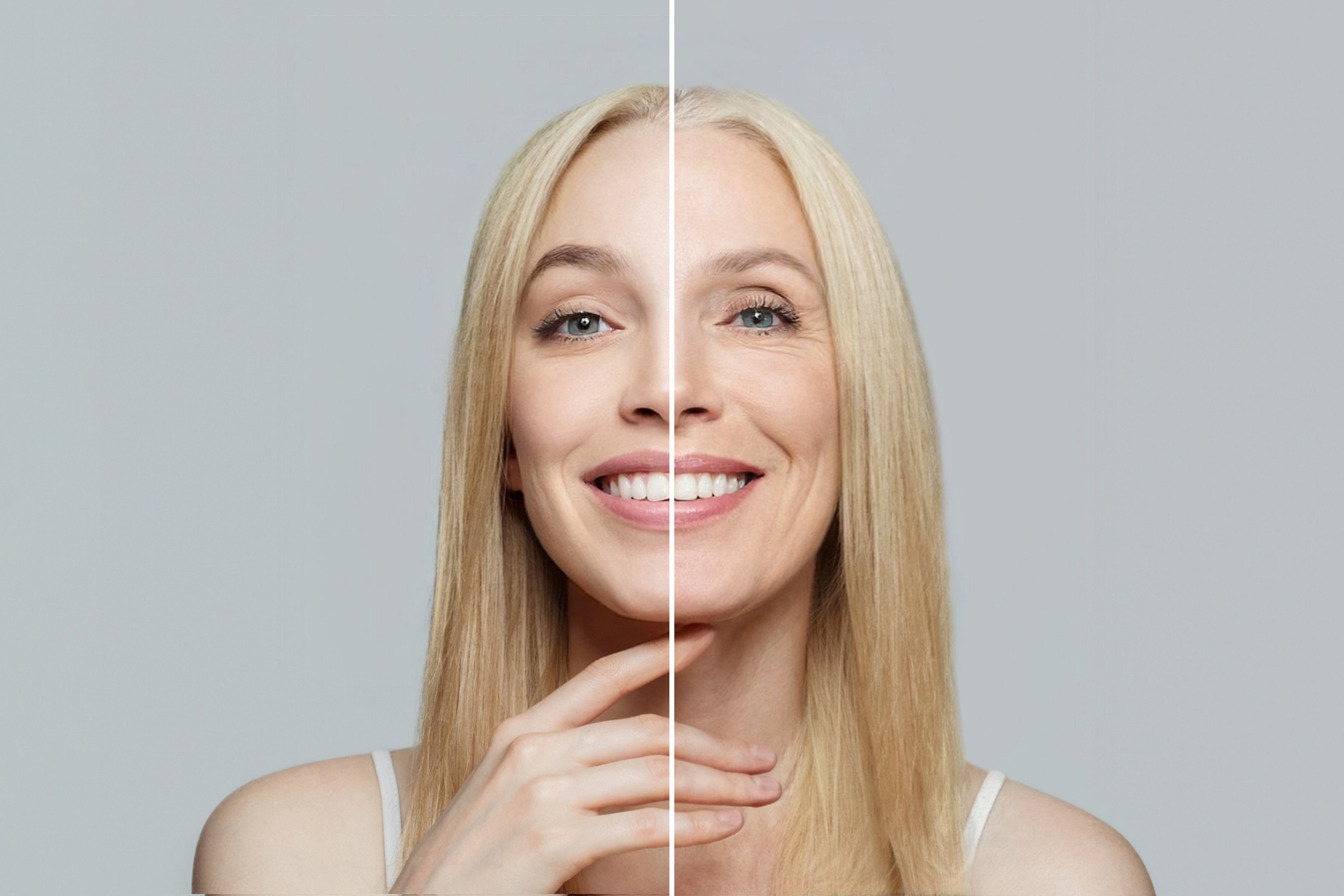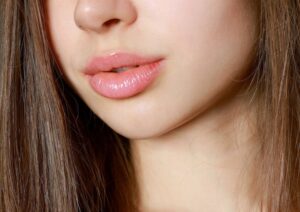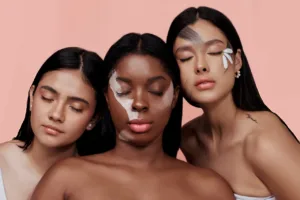Let’s find out how to use retinol for beginners, what the different types of retinoids are, and how retinol works on your skin.
What is retinol?
Retinol is known as a powerhouse ingredient for anti-aging due to its ability to boost collagen production, accelerate cell turnover, and improve skin texture and tone.
As a form of retinoid, retinol is derived from vitamin A and works at a cellular level to reduce the appearance of fine lines, wrinkles, and hyperpigmentation.
Types of retinoids
Retinoids comes in different forms, each has different strength and uses.
The main ones are:
- Retinol is the most common form of retinoids found in over-the-counter products, it’s gentler and perfect for beginner skin to improve skin texture and fight signs of aging.
- Retinaldehyde aka Retinal is a slightly stronger version of retinoids, it works faster than retinol.
- Tretinoin aka Retin-A is prescription-strength retinoid, known for being very effective at fighting acne, wrinkles, and hyperpigmentation. Since it is the strongest version, it is not for beginner or sensitive skin
If you’re looking for a more gentler, plant-based option, bakuchiol is a natural alternative to retinol. It doesn’t have the same vitamin A structure and is not a form of retinoids but offers similar anti ageing benefits, such as reducing wrinkles and improving skin texture without the irritation that can come with traditional retinoids. Each form of retinoid works by promoting skin cell turnover, but their potency and irritation levels vary, so choose one that fits your skin’s needs.
How does retinol work?
Retinol works on the skin when it’s in its active form, which is retinoic acid. But not all forms of retinoids convert the same way when applied to the skin.
Retinol when applied to the skin, it is converted into retinaldehyde (retinal), which is then further converted into retinoic acid, the active form that works on your skin.
Retinal (Retinaldehyde) is already one step closer to the active form, so it is directly converted into retinoic acid in the skin.
Adapalene and tretinoin are already in their active forms, so they don’t need to undergo conversion when applied to the skin.
They are directly absorbed and start working immediately on your skin. These are some of the most potent forms of retinoids used in skincare, typically prescribed for acne and signs of aging. For these reasons, they’re not suitable for beginner skin since they’re strong forms of retinoids.
Bakuchiol, on the other hand, is not a form of vitamin A, so it doesn’t require any conversion. It works similarly to retinol, a tad bit slow, providing similar benefits, but it is plant-based and is gentle and non-irritating.
Retinol for beginners
Retinol is perfect for beginners looking to dip their toes into the world of retinoids. It’s a gentler option compared to stronger alternatives like tretinoin, so you can ease your skin into it without overwhelming it. Start slow, maybe just a couple of times a week in the evening and work your way up as your skin gets used to it.
What is the best concentration of retinol for beginners?
If you have beginner skin, I strongly advise you to start with either bakuchiol or retinol with a low concentration. And gradually, as you build tolerance to it, you can increase the concentration level of retinol.
For starters, you should begin with a concentration of 0.25% or 0.1%. Some dermatologists recommend starting with 0.01% – 0.03%. The sweet spot is to stay within this range. If you have super sensitive skin and are using retinol for the very first time, start with 0.01% – 0.03%.
What is the rule of 3 for retinol?
Rule 3 of using retinol is that if you’re a beginner, start by applying it once a week for the first week, then twice a week for the second week, and three times a week for the third week.
After that, if you don’t experience any side effects, you can move to every other night. I recommend this approach for beginners and for those who want to increase their retinol percentage.
Side effects of retinol
Some common side effects of retinol include dryness, redness, peeling, and increased sensitivity to the sun. These side effects are pretty much normal and they occur because retinol accelerates skin cell turnover, which can temporarily irritate the skin. It also makes the skin more sensitive to UV rays. It is important that you wear sunscreen in the morning in order to protect your skin from sunburn and sun damage.
As said earlier, these side effects are normal, but if they are intense, you might want to either decrease the concentration or frequency with which you are using your retinol, or get your skin checked by a dermatologist for rosacea or eczema, in which case you might want to switch to alternatives like peptides or bakuchiol.
How to apply retinol?
- Cleanse your face with a gentle cleanser and pat dry.
- Wait for about 20 minutes to ensure your skin is completely dry.
- Apply a pea-sized amount of retinol to your face, starting with a thin layer. Avoid the areas around your eyes and mouth.
- Moisturize afterward to keep your skin hydrated and minimize dryness or irritation.
- Use sunscreen daily, as retinol can make your skin more sensitive to the sun.
Retinol before laser hair removal
You must stop using retinol at least 5-7 days before a laser session. Retinol can make your skin more sensitive, which may increase the risk of irritation or damage during the procedure. After the session, you can usually resume retinol use once your skin has fully healed but always follow your dermatologist’s advice.
Retinol can be a game-changer for your skin, but it’s important to ease into it. Start slow and gradually build up your tolerance. Consistency is everything, so give it time, and you’ll see the benefits start to show.
Maleeka is an orthodontic resident with a passion for skincare and beauty. She decodes beauty products, breaks down ingredients, and spills the tea on marketing hypes. When she’s not perfecting smiles or geeking out over the latest formulations and trends, you’ll find her binge-watching Netflix.





Pingback: Can You Use Salicylic Acid With Retinol?
Pingback: La Roche Posay Cicaplast Balm B5 To The Rescue For My Freaked-Out Skin Barrier
Pingback: Peace Out Retinol Eye Stick Is My New Budget Friendly Fix For Dull Under-Eyes
Pingback: Your Complete Guide To Dry Skin (From Knowing What To Use And What To Avoid)
Pingback: The Complete Guide To Collagen